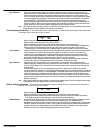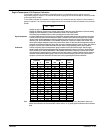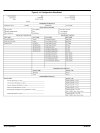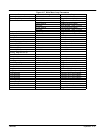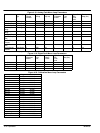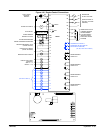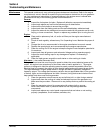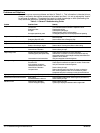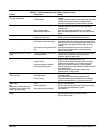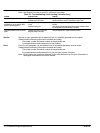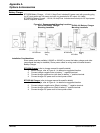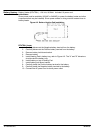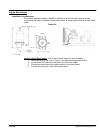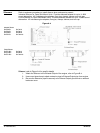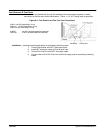
5‐2 Troubleshooting and Maintenance MN2408
Problems and Solutions
Some of the more common problems are listed in Table 5‐1. This information is intended to be a
check or verification that simple causes can be located and fixed. It is not an exhaustive “how to”
for all types of problems. Procedures that require in depth knowledge or skills (like flashing the
field) should be referred to a qualified generator service center.
Table 5‐1 General Troubleshooting Guide
Problem Possible Cause Remedy
Engine cranks but will not start
No fuel.
Low Oil Level
Restricted air flow.
No spark.
No engine speed during crank
Check that fuel valves are ON. Check fuel level in fuel tank.
Low Oil Pressure Sutdown activated. Replensih oil to full.
Check/replace air filter.
Check/replace spark plug(s).
Check that engine switch is in Start position.
The magnetic pickup must be correctly adjusted and operating.
Engine will not crank (electric start) Dead battery.
Emergency Stop LED is ON
Remove battery and trickle charge or replace with new battery.
Never Jump Start.
Reset controller after an Emergency Stop.
Engine starts but will not run smoothly Fuel or ignition problem Refer to engine manual.
Engine overheats Excessive load
Debris or dirt buildup on engine
Remove one or more electrical loads.
Remove debris. Clean engine surfaces to allow cooling.
No output voltage Ciruit Breaker tripped or failed.
Internal failure of Alternator
Reset circuit breaker or replace if required.
Return to factory for repair.
Output voltage varies Irregular speed (fixed speed mode)
Fluctuating speed (fixed speed mode)
Loose terminal or load connections
Check engine for malfunction or load for fluctuation
Stabilize load. The addition of a lamp load (resistance load) may
compensate partially for load changes caused by intermittent motor
operation. Do not overload.
Verify all connections and terminal tighness.
Low output voltage Low engine speed
Excessive load
High resistance connections -
connections will be warm or hot
Internal failure of Alternator
Low power factor
Verify engine RPM.
Check engine for malfunction or system for overload. Reduce load.
Verify all connections and terminal tighness.
Return to factory for repair.
Reduce inductive (motor) load. Some AC motors use about the
same current regardless of load. Do not use motors of greater
horsepower rating than is necessary to move the mechanical load.
High output voltage Excessive speed (fixed speed mode) Check engine for malfunction. Verify engine RPM.
Electrical shock when frame is touched Static charge.
Grounded armature or field coil.
Ground generator frame at local reference ground (see Section 3).
Return to factory for repair
Mechanical noise Internal failure of Alternator
Loose or misaligned coupling
Return to factory for repair
Tighten; align coupling and alternator shaft to engine shaft.



